From Icon To Iconographic: The Re-invention Of A Landmark

Timing is everything. David Stembel III, the Director of Housing and Urban Design at Grimm + Parker, and I have been talking for quite some time about the future of RFK and its surrounding site when an article in the Washingtonian, "What Should We Do with the RFK Site? It Matters More Than You Think" propelled us to share our ideas on the subject. We agreed with the author, Dan Reed, that the site of RFK Stadium is one of the City’s few remaining opportunities for smart redevelopment. In fact, the area of the Stadium is much more than just a site for redevelopment, the structure itself is an icon of the City and should be saved through adaptive reuse as the center piece of the redevelopment of the area along the Anacostia River on axis with the U.S. Capitol Building.
RFK Stadium is a historic edifice and exceptional part of the urban fabric and life of Washington. It is uniquely designed with an undulating, soft, roller-coaster roof-line and rhythmic surround of vertical fins that enclose ramps leading to the seating that overlooks a field of the greenest grass imaginable. Over the years the Stadium reverberated with football fans in the fall, sunbathed baseball fans under the summer skies, and most recently hosted the players and fans of professional soccer. It was the first of the multi-use stadiums, and the first to embrace ramp-based circulation as the prime means for conveying spectators to their seating levels.
It was constructed on land still owned by the National Park Service on the western side of the Anacostia River, and opened as “the District of Columbia Stadium,” home to the City’s baseball and football teams, in 1961. President John F Kennedy attended the first football game and threw out the very first pitch for baseball. Though the Senators left Washington in 1972, and the Redskins left in 1996, RFK has been the home field of the DC United since 1996, and was shared with the Nationals from 2005 to 2007. While the stadium will have no tenants once the United move to their new home in SW Washington in 2018, every Washingtonian has a story about events that took place inside this icon of the City.
A Tribute to Robert F. Kennedy
The Stadium was renamed in January 1969 in honor and tribute to US Senator and presidential candidate Robert F Kennedy who had been assassinated in Los Angeles the previous June. The renaming of the stadium was a joint action taken by the Interior Department, which has jurisdiction over the stadium site, and the D.C. Armory Board, which operates the stadium under a contract with the National Park Service. Secretary of the Interior Steward Udall made the announcement in the last days of the Johnson Administration. “Bob was Spartan in his adherence to physical fitness he loved the out-of-doors, he loved people — and he gloried in the competition of sports,” Udall noted in his announcement. While Robert Kennedy did not have a direct connection to the Stadium, as Attorney General in the early 1960s, Kennedy’s Justice Department played a role in the racial integration of the Washington football team when Kennedy and Udall threatened to revoke the team’s lease at the federally-owned stadium until the team promised to sign African American players.
Repurpose / Adaptive Reuse
In this era of greater environmental sustainability and historic preservation awareness, it seems only fitting that we take a harder look at our existing national capital building stock and re-evaluate the historical and iconographic importance of some of our most recognized buildings, including the soon to be vacant Robert F Kennedy Stadium. Adaptive re-use is a more environmentally friendly alternative to new construction and RFK is both an icon of the City and edifice honoring one of the great US Senators of the twentieth century.
RFK Stadium is part of our cultural legacy. Instead of demolishing this iconic structure, we suggest a more sustainable and historical approach that preserves portions of the stadium and re-purposes the site for recreational, residential and mixed-use development. Imagine living in a “stadium” and playing and socializing in the park that was once the field below. That circle of perfect grass nestled inside RFK, the scene of countless sporting events and concerts, should become a public space. Like the Piazza dell’Anfiteatro, the structure can be re-purposed and enhanced to provide the type of residential development that DC needs the most - affordable housing. This approach, an urban design and building adaptive reuse intervention, will become a catalyst for future development of the surrounding area and the Anacostia waterfront.
Historical Precedent
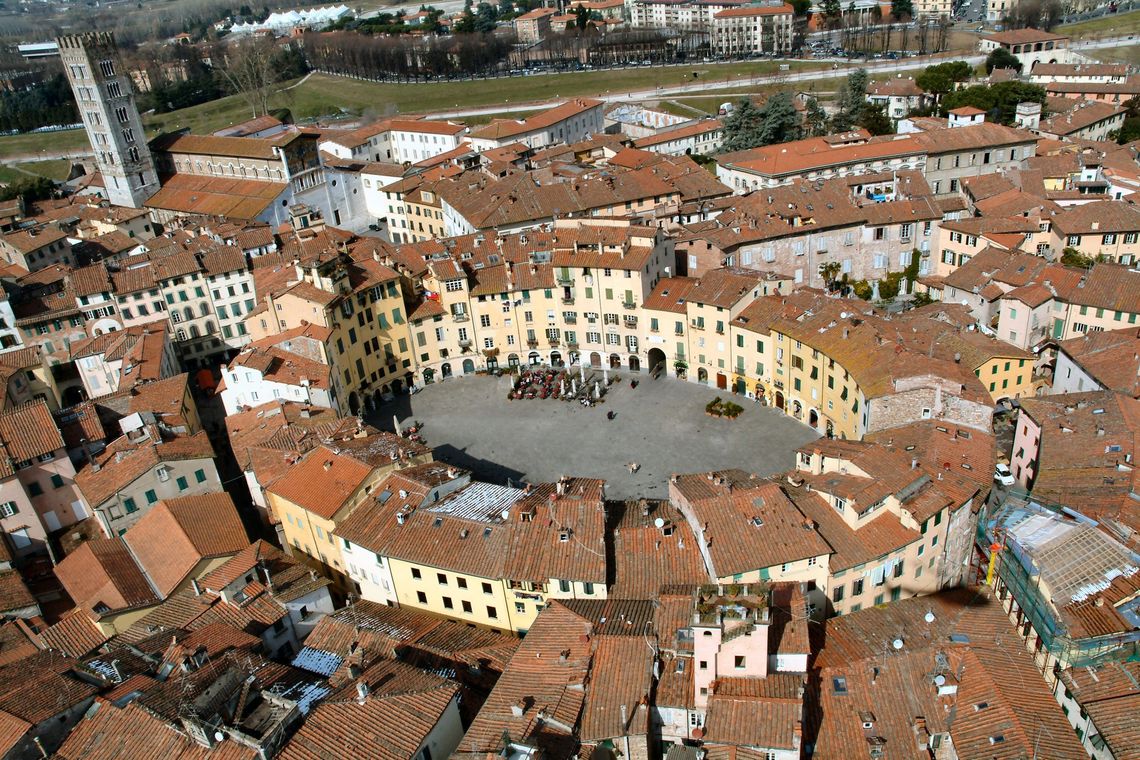
Piazza dell'Anfiteatro, Lucca, Italy (photo: Day Tripper: Lucca – Italy)
Re-purposing an arena, theater or stadium is not a new idea. Great precedents in Italy, such as the Piazza dell'Anfiteatro (above), for example in the town of Lucca in Tuscany, attests to the great urban design success of this approach. Re-purposed in 1830 by the architect Lorenzo Nottolini, the urban square surrounded by residences was built on the remaining structure of a roman theater dating back to the second century BCE. The ring of buildings surrounding the square follows the elliptical shape of the theater forever encapsulating the ancient structure and its historic presence in the urban fabric of the city.
The Stadium and the National Mall
For more than 100 years the National Mall has symbolized our nation and inspired the world. Our democratic values rooted in a balance of power, our cultural heritage housed in the museums, and the history of our country is all illustrated in the design of the National Mall. “We the People” come here to exercise our rights and celebrate our freedoms, to honor our history and culture, to express our unity and diversity, and to demonstrate our way of life.
Origin of an East / West Axis
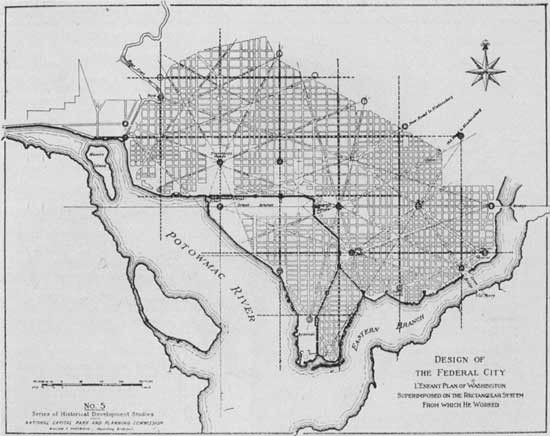
L’Enfant Plan (Wikimedia Commons)
French-born American architect and civil engineer Pierre L'Enfant established the grand east-west central avenue connecting the Potomac River with the Capitol Building in his 1791 plan for the “Federal City.” More than a century later, the McMillian Plan of 1902 proposed a National Mall - a simple expanse of grass framed by neoclassical museums and cultural centers with new major memorials to anchor the ends of the City’s two axes. Though not formally adopted, the main recommendations of the McMillian Plan have come to fruition with the National Mall stretching from the steps of the Capitol Building to the Lincoln Memorial Reflecting Pool and framed by the many museums of the Smithsonian Institution.
Placing a Stadium on the Mall

In a Master Plan for Washington published just months before Pearl Harbor, planners from the National Park and Planning Commission suggested that the Mall be extended from Capitol Hill eastward all the way to the banks of the Anacostia. Their plan included a stadium on the extended Mall adjacent to the river.
In the 1950’s when it was time to locate and design and new sports venue for the professional teams of the District of Columbia, the city planners and architects returned to this extended eastward axis of the Mall, drawing it all the way to the Anacostia where they placed the perfect circle of the City’s new venue directly on line with the U.S. Capitol.
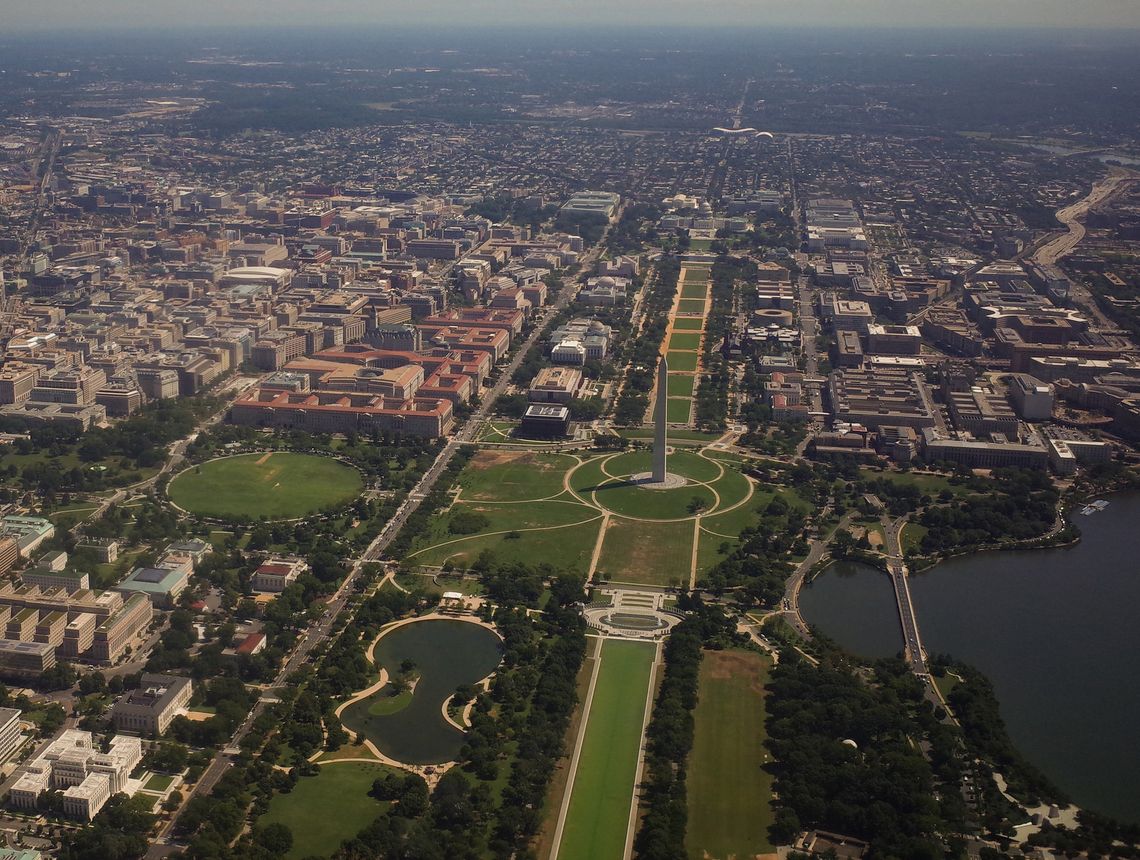
Today, when flying in to Reagan National, one can readily see that RFK aligns with and anchors the far end of the line that is an extension of the National Mall. While the green lawn of the Mall itself was never extended, it is inescapable that RFK Stadium is part of the civic experience of Washington DC drawn from the urban designs of L'Enfant, McMillian and the National Capital Park and Planning Commission.
Design Approach
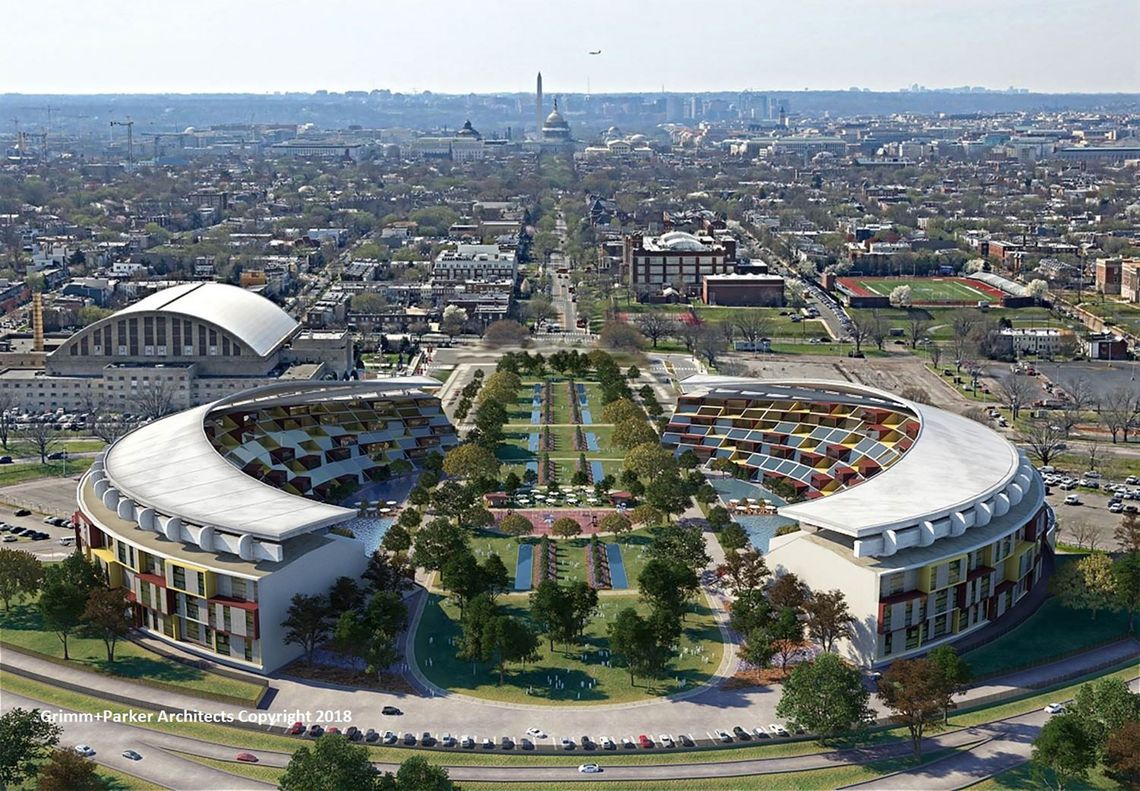
RFK re-imagined! The new Eastern gateway to the City.
Our approach is to retain the iconic elements of RFK Stadium, while opening the perimeter on two sides to create a pedestrian public space for recreation and leisure that extends the line of the National Mall right through the center of the space. The cantilever waveform roof will remain. The ramp structure and the seating will be removed. Terraced apartments will be inserted into the structure overlooking the new open space. RFK’s status as a symbol of the City will be reinforced, while reflecting our civic pride and commitment to our citizens.
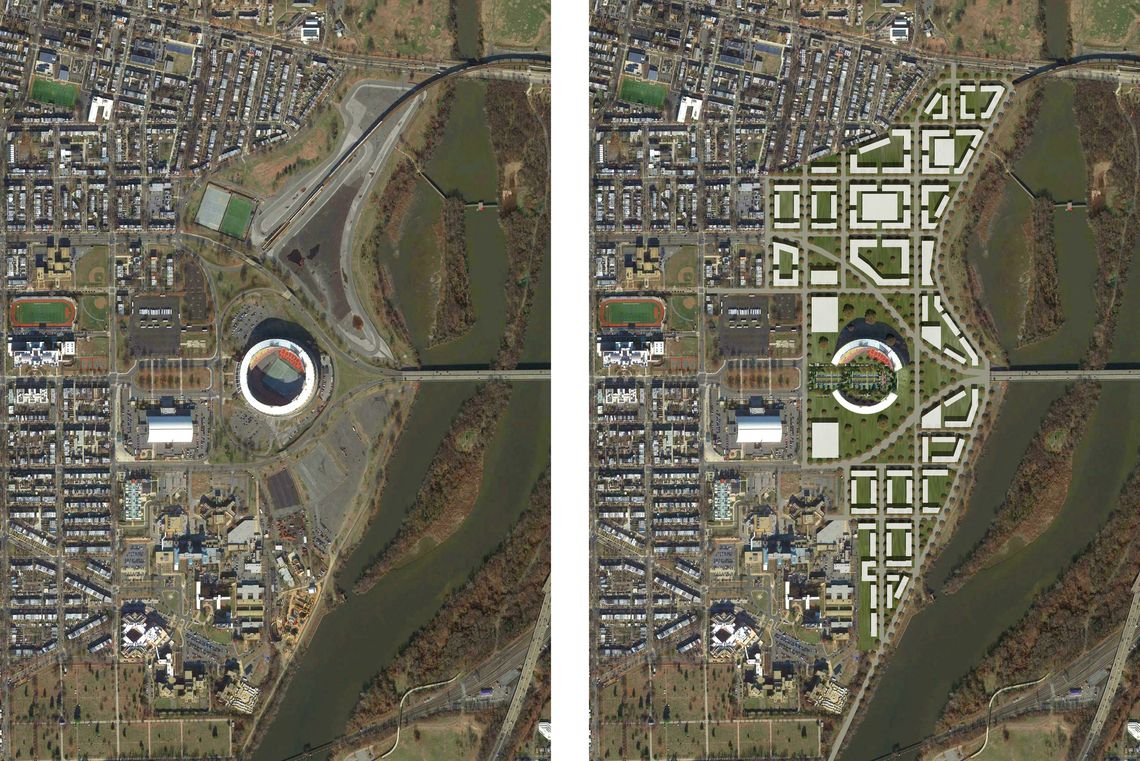
Existing Context Plan (left); Proposed Context Plan (right)

Proposed Cross-Section of RFK showing residential Units and public Park
In Conclusion
RFK will soon be empty but it should not remain empty.
it should not be dismantled, its steel recycled, nor its concrete carted off to a landfill. RFK should be repurposed and saved as a symbol of Washington and as a continuing tribute to Robert F. Kennedy and our citizens.
Re-purposing of RFK Stadium provides an unparalleled opportunity for design excellence and sustainable historic preservation. Our approach creates a uniquely inspired and much needed residential development. It celebrates the city’s past and looks confidently into the future through the re-imagination of a building icon. It preserves portions of the former structure in a way that balances a modern, forward-looking architectural statement within the historically rich context of L’Enfant’s plan. It extends the already established image and tradition of Washington’s urban plan into a bold and confident future.